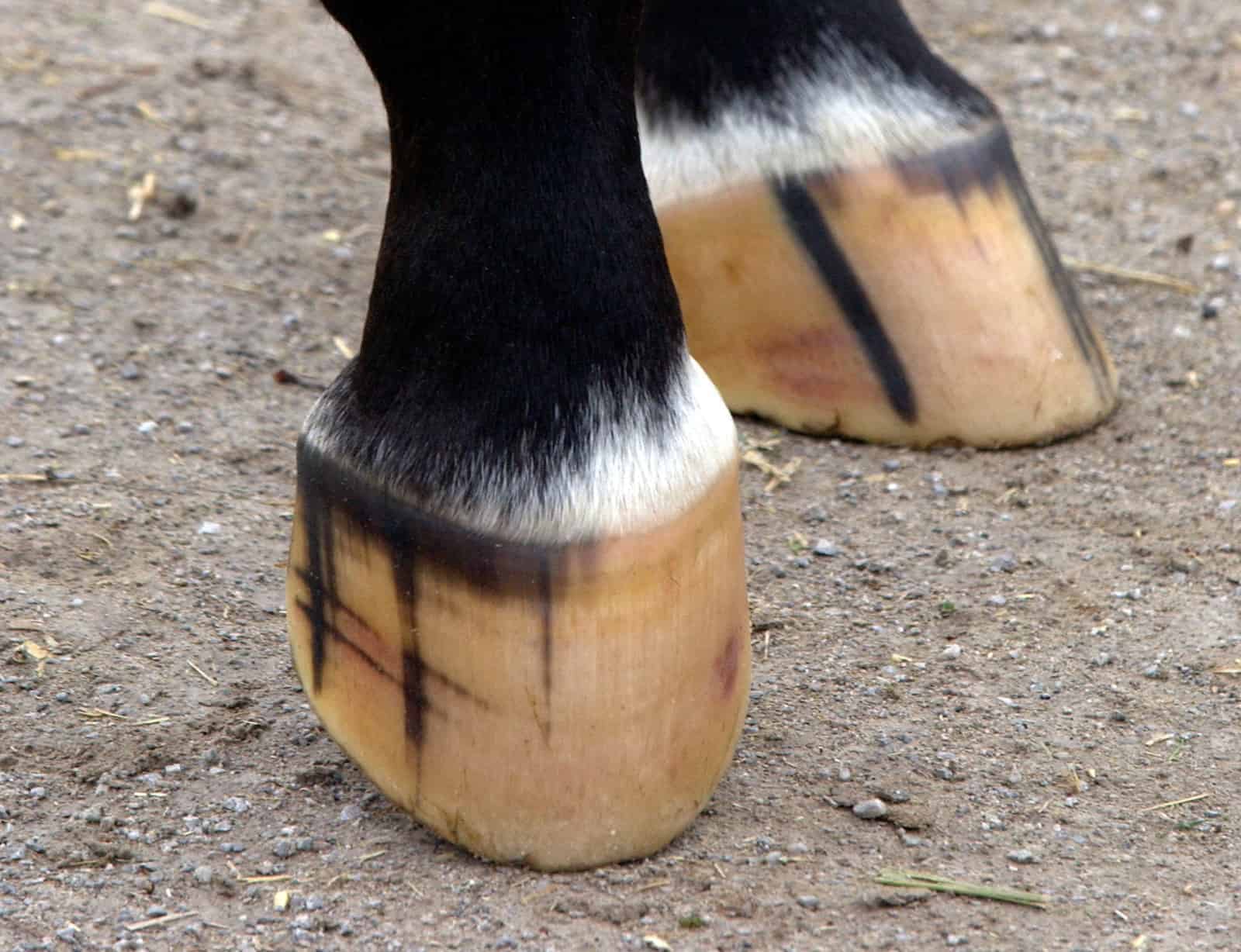4 Horse Hoof Hardening Tips
- Topics: Hoof Care, Hoof Care & Balance, Hoof Cracks, Hoof Problems, Horse Care, Lameness

“A hoof can’t harden as quickly as the ground freezes when temperatures drop (after warm daytime temperatures),” said Heath Lash, a certified farrier from Angola, Indiana. “That’s when chunks are broken out of the hoof wall and hooves weaken.”
Good maintenance—both of the horse and his living area—goes a long way in hardening hooves. Follow these four tips this season.
1. Keep the horse’s environment clean.
Whether a horse has access to a stall or is on full turnout, providing a dry area free from mud and excess manure is key to promoting hoof health. If the horse doesn’t have stall access, improve drainage around shelter areas so he has space to get out of wet mucky areas, allowing his hooves time to dry. For horses with stall access, picking their feet and giving them time in a clean, bedded stall, helps, Rucker said
Create a free account with TheHorse.com to view this content.
TheHorse.com is home to thousands of free articles about horse health care. In order to access some of our exclusive free content, you must be signed into TheHorse.com.
Start your free account today!
Already have an account?
and continue reading.
Written by:
Katie Navarra
Related Articles
Stay on top of the most recent Horse Health news with















